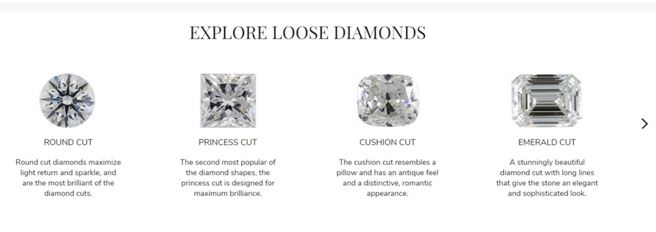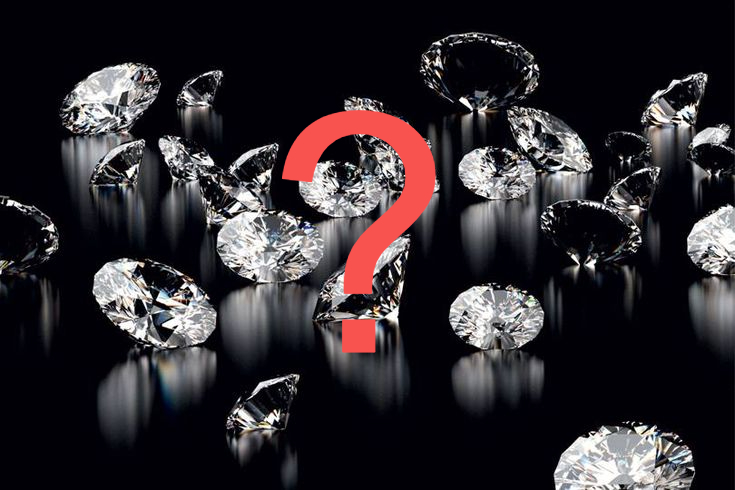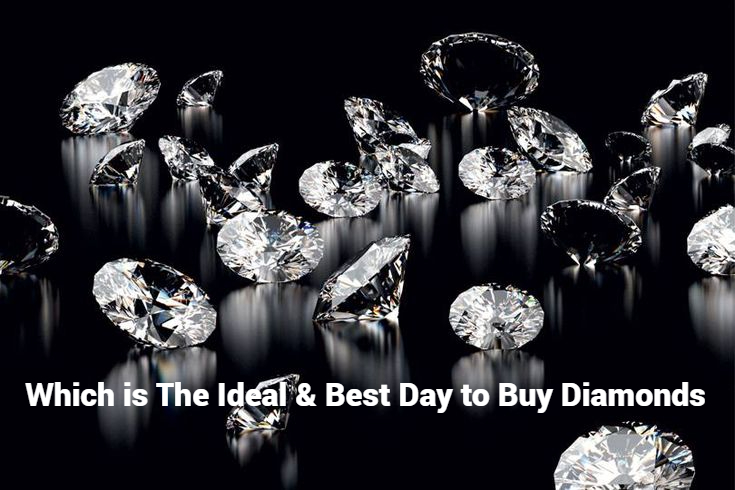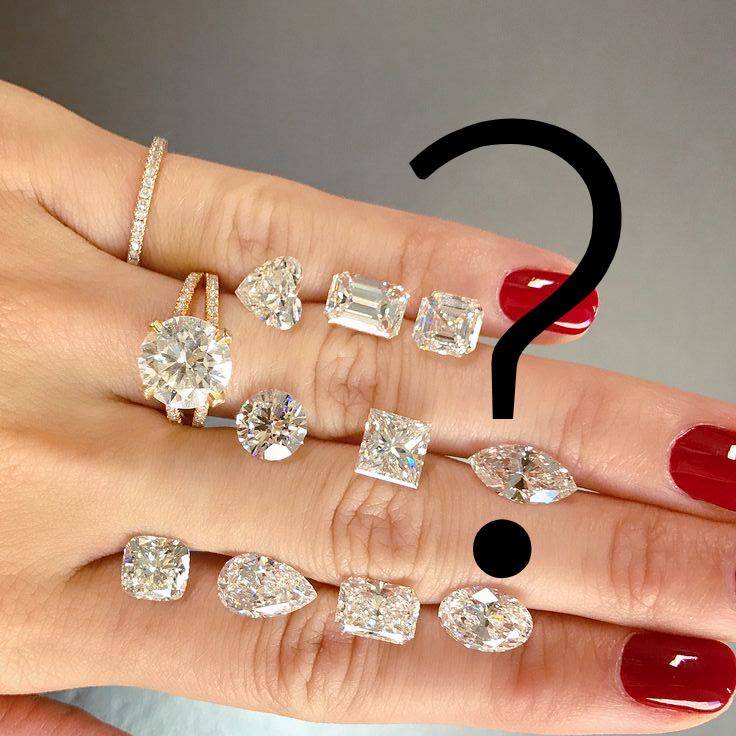This diamond right here is a diamond of intention. Nothing says ‘I love you’ better than this diamond. It is a symbol of affection and has been utilized to pass this message across at different times and in various ways. The Heart shaped diamond has been around for a very long time and is one of the popular cuts that we have today, especially among the rich and regal of the society.
BRIEF HISTORY
The Heart shaped diamond dates back to the 15th century. This time, it was not common among laymen, rather, it was seen as a symbol of royalty. History has it that the first to mention the heart shaped diamond was the Duke of Milan, Galeazzo Maria Sforza, in 1463. He described it in a conversation with another regal personality, Nicodemo as mythical quests of the Cosimo de Medici of the French political dynasty at that time.
Not long after this event, Queen Elizabeth received a heart shape diamond from the Queen of Scots in 1562. Back then, this diamond was considered as a symbol of friendship and goodwill.
Around the same time, there was a nobleman, Cardinal de Richelieu, who owned a 20 carat diamond heart which was said to be possessed only by kings at that time. It was given to him by a wealthy merchant.
Over the course of history, the diamond heart started out in the cycles of the rich and powerful and gradually become accessible to others outside this class. However, it is obvious that this diamond still has that royal touch.
It has also been associated with unmistakable beauty and class.
Due to its royal origins and then coupled with the fact that it is one of the most difficult designs to create because of its peculiar shape, the heart shape diamond is also one of the most expensive in its category. This price is arguably justified in all ramifications based on the beautiful result at the end of the process.
Popular people who have won the heart shaped diamond ring include Elizabeth Taylor, who received a heart shaped diamond ring from her husband Richard Burton for her fortieth birthday celebration. This ring is very popular in the diamond world and is also called the Taj Mahal.
Lady Gaga also received a wide large heart shaped ring for her engagement which is one of the most popular engagement rings today.
In keeping with its celebrity status, the diamond heart ring was also worn by Nicki Minaj. This particular one has a double halo setting and is exquisitely set as the perfect love symbol.
The heart shape has been more popular among the elites and celebrities and has seen a recent increase in the amount people of that class that wear it.
CUT
The first thing to note about the cut is that it has to be done by a professional and highly skilled cutter. This is because this shape is highly technical and difficult to create. There are intricate details that must be met or else, the diamond loses its appeal.
Another reason is that everyone knows how a heart shape should look like! This means that a flaw in the cut would be more obvious to a layman, just because there is already an expectation of how the heart shape should look like.
The heart shape consists of 56-60 facets, depending on the pattern that the cutter employs. This variation is usually based on the number of pavilion facets that are used in the cutting of this stone. When it is excellently cut, the heart shaped diamond gives amazing scintillation and fire.
As a modified brilliant cut, the heart shape would reflect light to the eye excellently and sparkle whenever light passes through it.
A core feature of the heart shaped diamond is the symmetry.
Symmetry in diamond cut refers to the arrangement of the facets in the diamond and how well they have been cut in relation to each other,
This is very important because the ability of the diamond to produce scintillation and reflect light well depends on the symmetry of the facets. If facets are not well cut and the symmetry is poor, then light entering the diamond would be blocked and light would not be properly reflected the eye, which would then produce some dark areas visible on the diamond.
The symmetry would also include ensuring that all the parts are equal. You do not want to have a diamond where one half is bigger than the other.
The parts of a heart shaped diamond are:
- The Cleft: Refers to the depressed point at the top of the diamond which gives the characteristic love shape. The two halves converge here
- The Lobe: refers to the curved upper part of the diamond, just after the cleft
- The Belly: the widest part of the diamond and is situated below the lobe
- The Wing: Just below the belly, the curved part that leads to the convergence below
- The point: This is where the two halves meet below.
In buying a heart shaped diamond, all of these parts have to be in their right proportion and equal to each other.
The cleft must be depressed enough to show the heart shape, but must not be too much so that the heart shape does not look awkward. Two words to describe it are sharp and distinct.
The Lobes must be evenly and uniformly curved. There should be no straight edges present. The separation of the lobes must also be visible.
The Belly should be smooth and equal. It should not be so large as to make the diamond look round.
The wings should be a little rounded as they curve down to the point. They should not be straight or flat. It is also important that the wings are not also bulged because bulged wings would give the diamond a round appearance.
The point and the cleft should be at the same point if an imaginary straight line is drawn from top to bottom.
The point and cleft should be set in prongs to prevent them from chipping off and make them more durable. For smaller diamonds, they should be set in a three prong setting – one on each lobe and the last on the point – so as to preserve the heart shape outline.
The Silhouette refers to how wide or narrows the diamond is. This depends on a number of factors, chief of which is the length to width ratio. Another factor that determines this is the use and setting to which the diamond would be put. If a heart diamond would be set in a pendant, it usually has a narrow length to width ratio of about 1.05 – 1.15. However, if the heart is to be used as a solitaire ring, a slightly wider cut of length to width ratio 0.85 -1.00 is usually preferred.
The girdle of the heart shape is also another important feature:
The significance of all this is in the final appearance of the diamond. It must not appear too wide or too narrow for the purpose it has been put.
Overall, the cut of a heart shaped diamond should not be compromised for any other thing. It determines the light performance, the shape appeal, and beauty of the stone. Any imperfection might distort the appearance of the stone.
The GIA has provided reference values for the different dimensions of the heart shaped diamond.
RECOMMENDED DIAMOND CUT QUALITY
| DIAMOND PART/CHARACTERISTIC | ||||||
|
CUT GRADE |
TABLE (%) |
DEPTH (%) |
PAVILLION DEPTH (%) |
GIRDLE |
CULET |
LENGTH TO WIDTH RATIO |
|
EXCELLENT |
53 – 63 |
58 – 62 |
42 – 43
|
Very thin to Slightly thick |
None |
0.95 – 1.02 |
|
VERY GOOD |
52 Or 64. 0 – 65.0 |
56.0 – 57.9 or 62.1 – 66.0 |
41 – 41.9 or 43.1 – 43.9 |
Very Small |
0.89 -0.94 Or 1.03 -1.05 |
|
|
GOOD |
51 Or 66.0 -68.0 |
53.0 – 55.9 or 66.1 – 71.0 |
40 – 40.9 or 44 – 44.9
|
Thin to Thick |
Small |
0.83 – 0.87 Or 1.06 – 1.10 |
|
FAIR |
50 Or 69 -70 |
50.0 – 52.9 or 71.1 – 74.0 |
39 -39.9 or 45 – 45.9 |
Very thin to Very Thick |
Medium |
0.80 – 0.83 Or 1.11 -1.15 |
|
POOR |
<50 Or >70 |
<50.0 or >74.0 |
< 39 or > 46 |
Extremely Thin to Extremely Thick |
> Medium |
>0.80 Or <1.15 |
CLARITY
As with other fancy cuts, when it comes to clarity, the choice of which to pick is subjective. Some clients might prefer to have a flawless diamond, while others might be fine with some degree of inclusion, as long as it does not distort the appearance or stability of the diamond.
Due to the shape of the diamond, the point is prone to having more inclusions than the rest of the heart shapes. So special attention should be paid to it while selecting.
Most experts also recommend not going below an SI1 clarity grade to have an eye clean diamond. You should always visually inspect any diamond you buy, no matter the ratings given by GIA or the seller. Ratings can differ significantly from what you see.
The GIA gives some recommended reference ranges for clarity:
RECOMMENDED DIAMOND CLARITY RANGES
| DIAMOND GRADE | |||||
| WEIGHT(Ct) | EXCELLENT | VERY GOOD | GOOD | FAIR | POOR |
| <0.50 | FL –VS2 | SI1 – SI2 | I1 | I2 | >I2 |
| 0.51 – 1.00 | FL –VS1 | VS2 – SI1 | SI2 | I1 – I2 | > I2 |
| 1.00 – 2.00 | FL – VVS2 | VS1 – VS2 | SI1 – SI2 | I1 | > I1 |
| > 2.00 | FL –VVS2 | VS1 – VS2 | SI1 | SI2 | > SI2 |
Note that as the size increases, inclusions become more obvious to the eye and as such, it is always recommended to stay at SI1 and above.
If you want to go for a lower clarity grade, you should consult your gemmologist.
Color
The color, like the clarity for a fancy shape, is also majorly subjective. Even though GIA provides a color guide, the decision for which to go for is still down to the client. This is because it depends on the preference and uses that the heart shaped diamond would be put to.
Some clients prefer a clean and colorless diamond. For such buyers, the D-F range would be perfect. Some buyers, however, would prefer warmer colors of the G-H range. It all depends on the buyer.
It is recommended that you do not go below the G color range, except you want to use the heart shape in some yellow or gold wettings. Also consider the fact that some parts of the diamond, as the point, would significantly show more coloring than other parts, because of the design and the shape.
If you also want to save some more, here is a tip: in going for a colorless grade, there is really not much of an obvious difference between a D and F grade. You could decide to go for an F, as it would appear the same way to the eye and so spend less.
| DIAMOND GRADE | |||||
| WEIGHT (ct) | EXCELLENT | VERY GOOD | GOOD | FAIR | POOR |
| < 0.50 | D – G | H – I | J – K | L -M | > M |
| 0.51 – 1.00 | D – F | G | H – I | J – K | > K |
| 1.00 – 2.00 | D – F | G | H- I | > I | |
| > 2.00 | D – F | G | H- I | > I | |
You should also notice that as the size increases, the coloring becomes more obvious.
CARAT
Now, this is very import and peculiar to the heart shaped diamond, among the fancy cuts. The size and weight of the heart shape have a lot to do with its visual appearance. This is because a larger heart shaped diamond would bring out the outline and dimensions of a heart shape better.
A smaller sized diamond would produce a distorted heart shape which would look more like a round cut diamond that is out of shape! The cleft would not be visible, the lobes would not be distinctly separated and the point might not look sharp enough.
The fact is that the reason for going or a heart shaped diamond in the first place is because of the shape itself!
This means if the diamond is too small, the purpose of a heart shaped diamond in the first place is already defeated.
Another reason to be conscious of size is that once the diamond is set in prongs if it is too small, the heart shape would be further concealed.
Therefore, it is recommended in buying a heart shaped diamond, you should not go lower than 0.50carats. It is also generally said for this shape, that the bigger, the better.
Therefore, pay close attention to the carat.
| Weight (ct) | Size (mm) |
| 0.25 | 4 |
| 0.50 | 5 |
| 0.75 | 6 |
| 1.00 | 6.5 |
| 1.50 | 7.5 |
| 2.00 | 8 |
| 2.50 | 8.50 |
| 3.00 | 9.00 |
| 3.50 | 10 |
| 4.40 | 11 |
| 5.60 | 12 |
| 6.00 | 12.4 |
ADVANTAGES
- BRILLIANCE: The heart shaped diamond is a brilliant cut. It reflects light excellently and so provides a lot of scintillation and fire for the eyes. The visual appeal of this diamond is in a class of its own. Coupled with the shape, it is simply a stunner
- CLASS: The heart shaped diamond, as we have seen is associated with class and elegance. Not everybody wears a heart shaped diamond! Only a select few. As an engagement ring, it would definitely stand out in a sea of others. It is seen as a diamond for upper class people and if you desire to look like one, then this is the ring for you.
- INTENT: This diamond speaks volumes. It can be used to say how you feel about someone without saying too much. It has a message that cannot be mistaken for anything else therefore, it is the perfect engagement ring!
- DYNAMIC USE: Even with its shape, the heart shaped diamond can be used in different settings. It can be used as an engagement ring, as a necklace, like earrings and other forms of jewelry. It can also be used in setting with other gemstones like rubies and gold. It blends well with its surroundings.
DISADVANTAGES
- DIFFICULTY IN DESIGN: This shape requires a very skilled professional to cut it excellently. Its difficulty in design stems from its dimensions and corners that have to be identical and smooth and also what people expect of the design. It is therefore not routinely cut like other heart shapes. There are also many poorly cut heart shapes in the market due to its complex design.
- PRICE: It is more expensive than other fancy shapes and you could get other fancy shapes with better specifications than a heart shape.
- RARE: The heart shaped cut is not very popular among common people. This means that it is not in vogue among most people. If you love trendy cuts, this might not be it for you.
- SIZE: As we have seen, the heart shaped diamond has to be significantly large enough to display its features ell. This implies that settings, where a smaller sized diamond is needed, would not be able to use it or have poor results if it is used.



